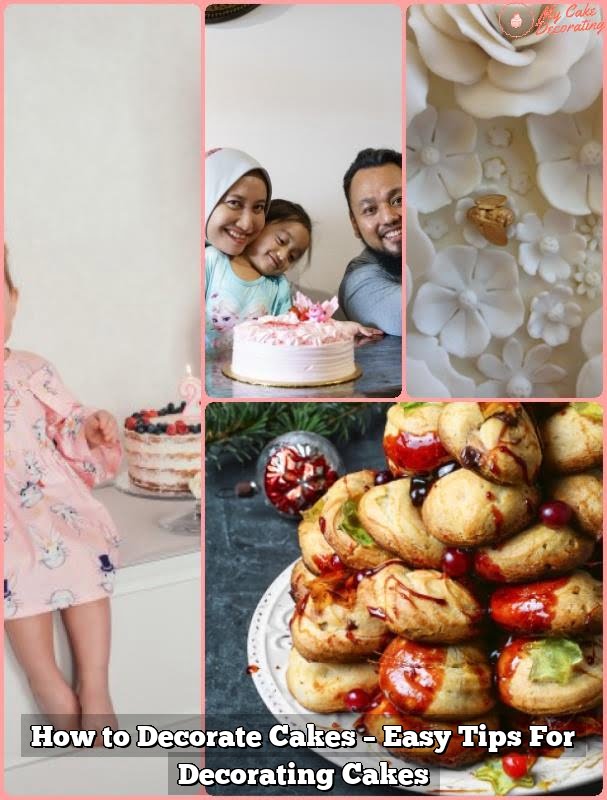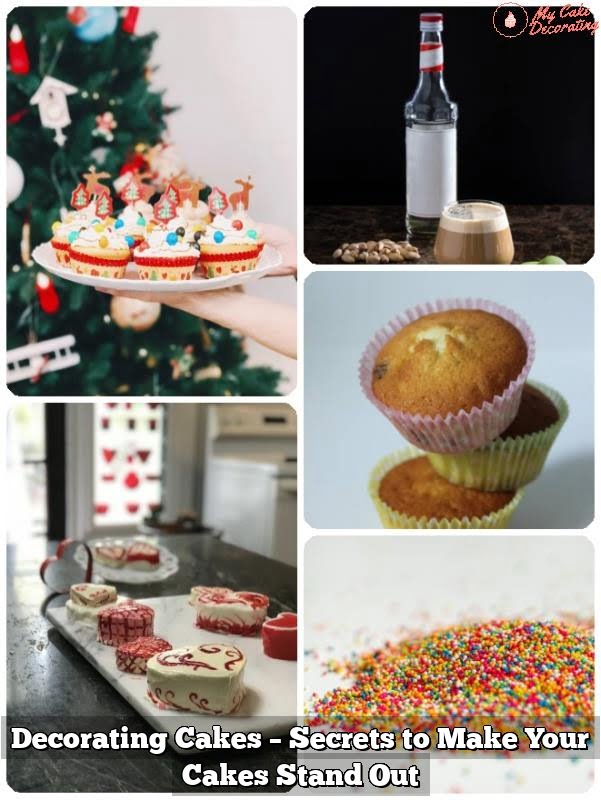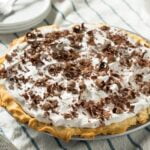Cake decoration is an art form that elevates a simple baked dessert into a stunning centerpiece. Whether it’s for a special occasion or just for the joy of creating something beautiful, the art of decorating cakes has evolved over the years, offering a wide range of tools and techniques to explore. From buttercream frosting to fondant, edible decorations, and airbrushing, there are numerous ways to adorn a cake and make it truly stand out.
One may wonder, what do they use to decorate cakes? The answer is a myriad of tools and techniques that have been perfected by professional bakers and cake decorators. In this article, we will explore the world of cake decoration and delve into the various methods and materials used to create intricately designed and visually appealing cakes that are almost too beautiful to eat.
The importance of beautifully decorated cakes goes beyond just visual appeal; it can turn an ordinary cake into a work of art that enhances any occasion. Whether it’s a wedding, birthday, or celebratory event, a beautifully decorated cake can be the highlight of any gathering.
In this article, we will take an in-depth look at the different types of tools and techniques used for cake decoration, from traditional piping bags and tips to modern airbrushing methods. Let’s dive into the enchanting world of cake decoration and discover the endless possibilities for creating edible masterpieces.
Types of Cake Decorating Tools and Techniques
Cake decoration involves a variety of tools and techniques that can be used to create stunning and unique designs. From piping bags and tips to fondant and edible decorations, there are numerous options available to cake decorators. Piping bags and tips are commonly used to create intricate designs with buttercream frosting, while fondant provides a versatile medium for crafting detailed decorations. Additionally, edible ink allows for customization and personalization, while airbrushing can add depth and dimension to cake designs.
When it comes to cake decoration, one of the most commonly used tools is the piping bag. Paired with different tips, piping bags allow decorators to create a wide range of designs using buttercream frosting or royal icing. These tools are essential for adding borders, writing messages, or creating decorative elements such as flowers or leaves.
Another popular tool for cake decoration is fondant, a pliable icing that can be rolled out and draped over cakes to create a smooth finish. Fondant is also ideal for creating sculpted decorations such as figurines or intricate patterns. This versatile medium comes in a variety of colors and can be flavored with extracts or essences for added customization.
Furthermore, edible decorations such as sugar flowers, edible glitter, and edible pearls are often used to enhance the appearance of cakes. These decorative elements can add texture, sparkle, and elegance to any design. Whether used individually or in combination, these edible decorations offer endless possibilities for creative expression in cake decorating.
Buttercream Frosting
To decorate cakes with buttercream frosting, bakers use piping bags and various tips to create different patterns and textures. Commonly used tips include round tips for creating dots or writing, star tips for rosettes or border designs, and petal tips for floral decorations. By using different techniques such as spreading, piping, and smoothing, bakers can achieve a wide range of decorative effects with buttercream frosting.
Another key aspect of using buttercream for cake decoration is achieving the ideal consistency. The right consistency allows the frosting to be easily spreadable or pipeable while holding its shape. Bakers often add small amounts of liquid (such as milk or heavy cream) or powdered sugar to adjust the consistency as needed. By mastering the art of working with buttercream frosting, bakers can transform simple cakes into stunning works of edible art.
| Buttercream Frosting | Cake Decoration |
|---|---|
| Versatile | Smooth finishes |
| Piping bags and tips | Intricate designs |
| Ideal consistency | Edible art |
Fondant
There are different types of fondant available, including traditional fondant, marshmallow fondant, and commercial fondant. Each type has its own unique characteristics and is suitable for various cake decorating projects. When using fondant to decorate cakes, it’s important to knead it until it is pliable and then roll it out to the desired thickness before carefully draping it over the cake.
Here are some key ways in which fondant can be used to decorate cakes:
- Creating 3D figurines or sculpted designs
- Adding texture and dimension to cake surfaces
- Covering entire cakes for a clean, polished look
Fondant can also be colored using gel food coloring to achieve vibrant or subtle hues for cake decoration. By mastering the art of working with fondant, decorators can create visually stunning cakes that stand out from the rest. Whether it’s adding delicate lace patterns, intricate flowers, or whimsical shapes, fondant offers endless possibilities for creative expression in cake design.
Edible Decorations
When it comes to decorating cakes, edible decorations play a crucial role in enhancing the appearance and visual appeal of the dessert. From delicate sugar flowers to shimmering edible glitter and elegant edible pearls, these decorations add a touch of elegance and sophistication to any cake design.
Sugar Flowers
One of the most popular edible decorations used in cake decorating is sugar flowers. These exquisite and intricately crafted blooms are made from fondant or gum paste and can be shaped and colored to resemble real flowers. From vibrant roses to dainty daisies, sugar flowers offer a beautiful and realistic adornment for cakes, making them perfect for special occasions such as weddings, birthdays, and anniversaries.
Edible Glitter and Pearls
In addition to sugar flowers, edible glitter and pearls are also commonly used to embellish cakes. Edible glitter adds a touch of sparkle and shimmer to the cake’s surface, creating a magical and enchanting effect. Meanwhile, edible pearls provide an elegant and sophisticated finishing touch, adding a hint of luxury to the overall design. Both of these decorations can be used to accentuate specific details on the cake or create a dazzling cascade of sparkle.
Utilizing Different Edible Decorations
When it comes to utilizing these edible decorations, cake decorators have endless possibilities. Sugar flowers can be arranged into stunning bouquets or cascading designs on wedding cakes. Edible glitter can be dusted onto fondant accents or used to create a twinkling night sky effect. Edible pearls can be delicately placed on tiered cakes or used as centers for sugar flower creations. The key is to experiment with different combinations and placements to achieve the desired visual impact.
Airbrushing
One of the key benefits of using an airbrush for cake decoration is the level of control it provides. Cake decorators can adjust the pressure and angle of the airbrush to achieve different effects, from subtle shading to bold color transitions. This level of precision makes it possible to create detailed designs and decorations that may be challenging to achieve with traditional piping or painting techniques.
While airbrushing can be used to create a wide range of designs, it is particularly well-suited for achieving ombre effects, blending multiple colors seamlessly, and creating custom stenciled patterns on cakes. From simple gradients to intricate designs inspired by nature or art, the creative possibilities with airbrushing are virtually endless.
Whether it’s adding depth to fondant decorations or creating a vibrant background for other decorative elements, an airbrush can be a versatile tool in the hands of a skilled cake decorator.
In addition to its artistic potential, airbrushing also offers practical advantages in cake decoration. When used with edible colors specifically formulated for airbrushing, this technique can provide even coverage without altering the texture or taste of the cake. As such, many professional bakers and decorators consider airbrushing an essential tool in their repertoire when it comes to creating visually striking and aesthetically pleasing cakes.
Importance of Color Theory
Color theory is a fundamental aspect of cake decoration that can greatly impact the overall look and feel of a cake. Understanding the significance of color theory is essential for creating visually appealing and harmonious designs. Whether you are a professional baker or an amateur enthusiast, incorporating the principles of color theory into your cake decoration process can elevate your creations to the next level.
Significance of Color Theory
Color theory plays a key role in cake decoration by influencing the mood, perception, and aesthetic appeal of the final product. By understanding the basics of color theory, decorators can effectively communicate emotions and messages through their cake designs.
For example, warm colors like red, orange, and yellow can evoke feelings of excitement and warmth, while cool colors such as blue, green, and purple convey a sense of calmness and tranquility. Additionally, color theory helps decorators create visual balance and harmony in their designs by understanding concepts such as complementary colors, analogous colors, and color contrasts.
Tips for Selecting and Combining Colors
When it comes to selecting and combining colors for cake decoration, there are several tips that decorators can keep in mind to achieve aesthetically pleasing results. Firstly, it is important to consider the theme or inspiration for the cake design and select colors that align with that concept.
Additionally, paying attention to color intensity and saturation can help create dimension and depth in the design. Experimenting with different color combinations through swatches or digital tools can also aid decorators in visualizing how various colors will interact with each other on the cake.
Utilizing Color Theory in Practice
In practice,
Understanding the significance of color theory equips cake decorators with valuable insights into creating captivating designs that resonate with their audience’s senses.
Tips and Tricks for Beginners
For those new to the world of cake decoration, it can be overwhelming to know where to begin. With so many tools and techniques available, it’s important to start with the basics and gradually build your skills. When it comes to decorating cakes, there are several essential tools that every beginner should have in their arsenal.
Piping bags and tips are essential for creating intricate designs with frosting, while fondant allows for sculpting and shaping decorative elements. Additionally, edible ink can be used for printing images and designs onto cakes.
When using buttercream frosting for cake decoration, it’s important to ensure that the consistency is just right. This will make it easier to pipe onto the cake and create smooth, even designs.
To achieve the perfect consistency, beginners can start by adding small amounts of liquid (such as milk or water) to the frosting until it reaches a smooth and spreadable texture. It’s also helpful to practice different piping techniques on a flat surface before attempting them on a cake.
One of the most important tips for beginners in cake decoration is to not be afraid of making mistakes. Experimentation is key to learning and improving your skills.
Whether it’s trying out new piping techniques or experimenting with different color combinations, don’t be discouraged if your first attempts don’t turn out exactly as planned. With practice and patience, you’ll soon become more confident in using various tools and techniques to create beautifully decorated cakes that showcase your creativity.
Conclusion
In conclusion, cake decoration is a crucial aspect of the baking process that adds beauty and creativity to the final product. From traditional piping techniques to modern airbrushing methods, there are countless tools and techniques available for decorating cakes. Whether using buttercream frosting, fondant, edible decorations, or experimenting with color theory, there are endless possibilities for creating stunning cake designs.
For those new to cake decoration, it’s important to start with the basics and gradually explore different tools and techniques. Understanding the fundamentals of color theory, practicing with piping bags and tips, and learning how to work with fondant are great starting points for beginners. With dedication and practice, anyone can achieve professional-looking results in cake decoration.
Ultimately, the key to successful cake decoration lies in experimentation and creativity. Don’t be afraid to try new things or combine different decorating techniques to achieve unique and personalized designs. So the next time you’re wondering “what do they use to decorate cakes,” remember that the possibilities are endless – it’s all about exploring and enjoying the process of creating beautiful edible art.
Frequently Asked Questions
What Do Professionals Use to Decorate Cakes?
Professionals use various tools and equipment to decorate cakes, such as piping bags and tips, fondant molds, sculpting tools, edible paints, airbrush guns, and stencils. These tools allow them to create intricate designs and decorations on cakes.
What Material Is Used to Decorate Cakes?
The main material used to decorate cakes is fondant. Fondant is a pliable sugar paste that can be rolled out and draped over cakes to create a smooth and flawless finish. It can also be shaped and molded into various decorative elements such as flowers, ribbons, and figurines.
What Do People Decorate Cakes With?
People decorate cakes with a wide range of decorative elements including buttercream frosting, royal icing, edible sprinkles, chocolate ganache, fresh fruits, edible flowers, candy pearls, and metallic dragees. These items add texture, color, and flavor to the cake while making it visually appealing for special occasions.

Welcome to my blog about home and family. This blog is a place where I will share my thoughts, ideas, and experiences related to these important topics. I am a stay-at-home mom with two young children. I hope you enjoy reading it! and may find some helpful tips and ideas that will make your home and family life even better!





